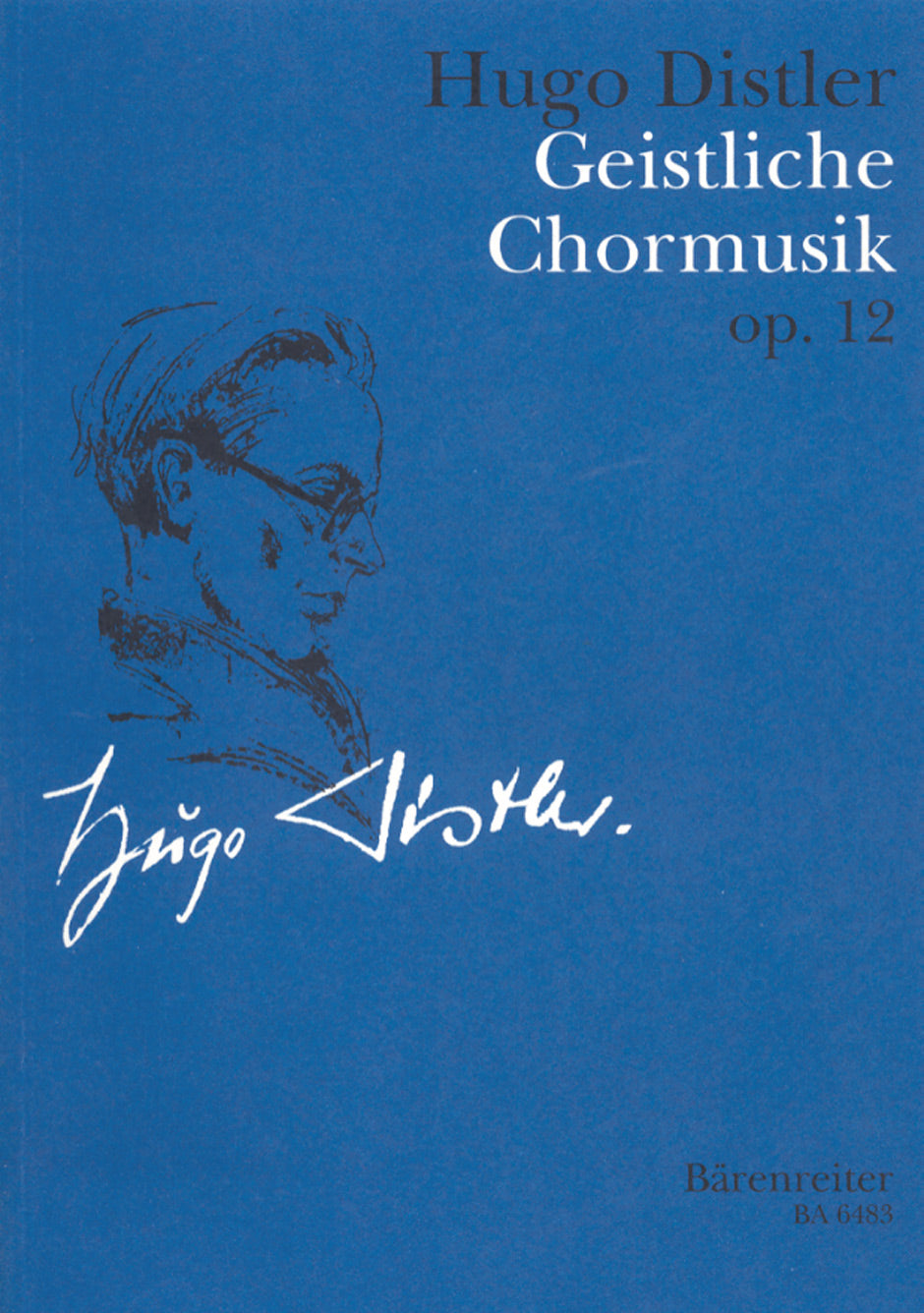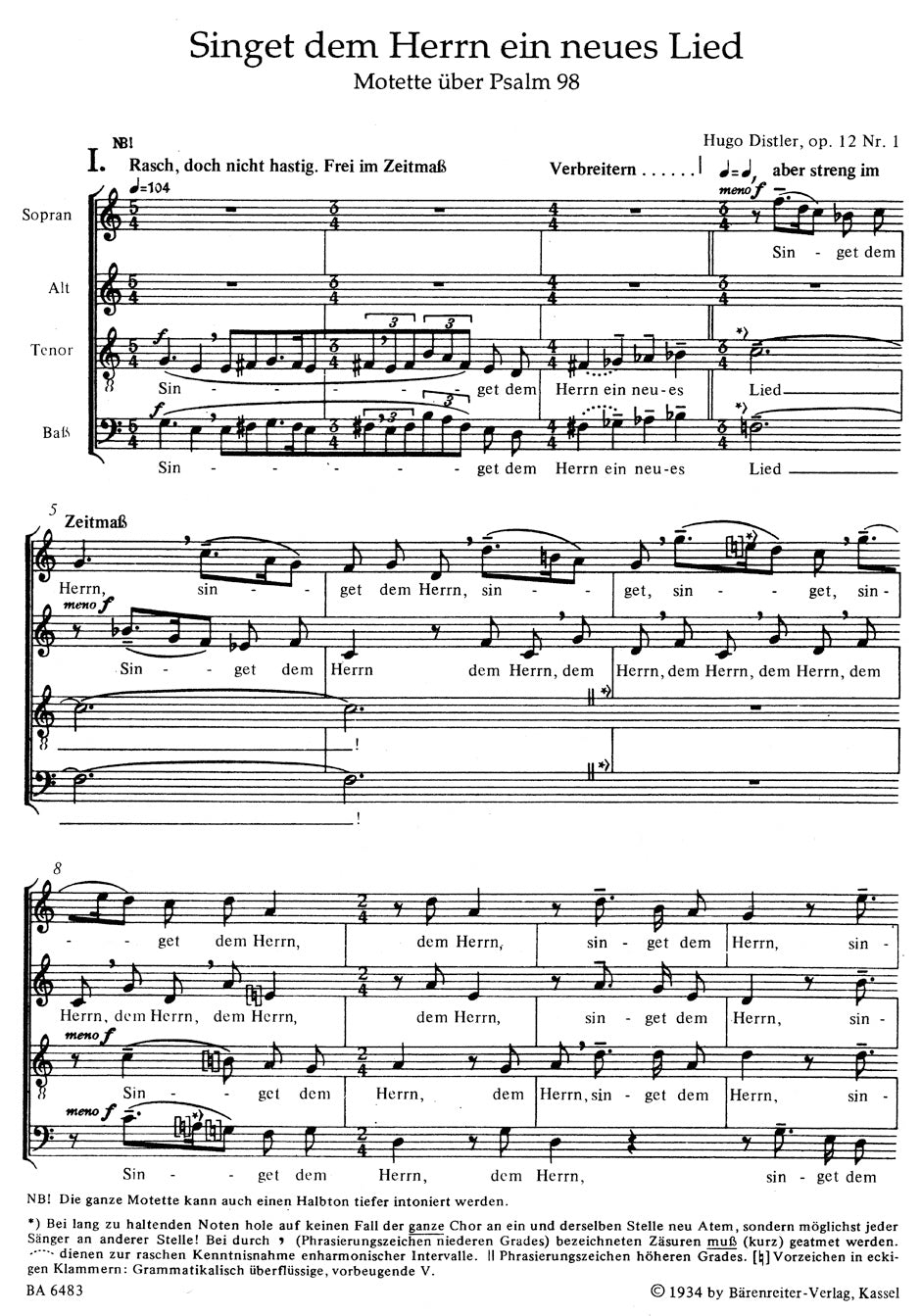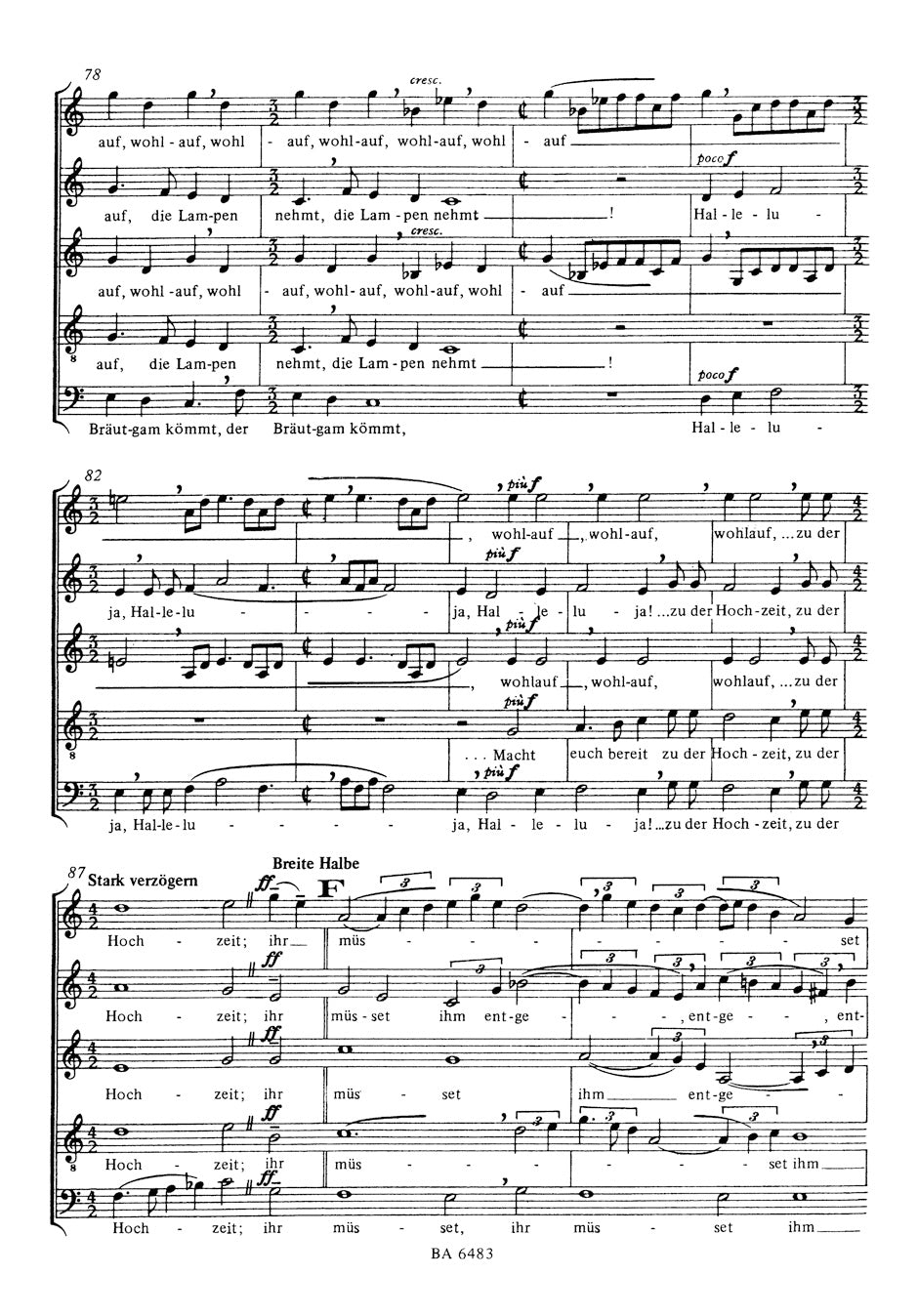Distler: Geistliche Chormusik, Op. 12
Expected to ship in about a week.
- Composer: Hugo Distler (1908-1942)
- Instrumentation: SATB Choir
- Work: Geistliche Chormusik, Op. 12
- Work Language: German
- ISMN:
- Size: 7.5 x 10.6 inches
- Pages: 112
Description
Einzelausgaben:
Nr. 1: Singet dem Herrn ein neues Lied. Motette über Psalm 98 (1934/36). BA 751, käuflich
Uraufführung am 29. April 1934 in Lübeck: St. Jakobi
Nr. 2: Totentanz. 14 Spruchmotetten zum Totensonntag nach Worten aus dem "Cherubinischen Wandersmann" des Angelus Silesius im Wechsel mit einem von Johannes Klöcking nach dem Lübecker Totentanz gestalteten Dialog für Sprecher; Flöte ad libitum. BA 752, Full Score and Flöte (Zwischenspiele) käuflich
Uraufführung am 24. September 1934 in Lübeck: Dramatischer Laienchor des Stadttheaters, Lübecker Sing- and Spielkreis, Leitung Bruno Grusnick
Nr. 3: Wach auf, du deutsches Reich. Motette zum Reformationsfest. Mit Soli (SS). BA 753, käuflich
Uraufführung am 9. November 1934 in Leipzig: Thomaskirche
Nr. 4: Singet frisch and wohlgemut. Motette auf die Weihnacht (1934/36). BA 754, käuflich
Nr. 5: Ich wollt, dass ich daheime wär. Motette zum Totensonntag. BA 755, käuflich
Nr. 6: Wachet auf, ruft uns die Stimme. Motette über den Choral zum Totensonntag (SSATB) mit Soli (SS). BA 756, käuflich
Nr. 7: In der Welt habt ihr Angst. Begräbnismotette. BA 757, käuflich
Nr. 8: Das ist je gewisslich wahr. Motette zum 14. Sonntag nach Trinitatis (SATBB). BA 1801, käuflich
Nr. 9: Fürwahr, er trug unsere Krankheit. Passionsmotette (1941). BA 1802, käuflich
Contents:
- Singet dem Herrn ein neues Lied
- Totentanz für Sprecher, Flöte ad lib
- Gott in deiner Majestät mit Soli (SS)
- Singet frisch and wohlgemut
- Ich wollt, dass ich daheime wär
- Wachet auf, ruft uns die Stimme (SSATB mit Soli SS)
- In der Welt habt ihr Angst
- Das ist je gewisslich wahr
- Führwahr, er trug unsere Krankheit
- Anhang: Wacht auf, es tut euch not
Publishers use a lot of words to describe what they sell, and we know it can be confusing. We've tried to be as clear as possible to make sure you get exactly what you are looking for. Below are descriptions of the terms that we use to describe the various formats that music often comes in.
Choral Score
A score for vocalists that only contains the vocal lines. The instrumental parts are not there for reference. Generally, cheaper than a vocal score and requires multiple copies for purchase.
Facsimile
Reproductions of the original hand-written scores from the composer.
Full Score
For ensemble music, this indicates that the edition contains all parts on a single system (there are not separate parts for each player). In larger ensembles, this is for the conductor.
Hardcover
Hardbound. Generally either linen-covered or half-leather.
Orchestral Parts
Similar to a wind set, this is a collection of parts. In the case of strings, the numbers listed are the number of copies included, though generally these are available individually (often with minimum quantities required).
Paperback
When publishers offer multiple bindings (e.g. hardcover) or study scores, this is the "standard" version. If you're planning to play the music, this is probably what you want.
Performance / Playing Score
A score of the music containing all parts on one system, intended for players to share. There are not separate parts for each player.
Set of Parts
For ensemble music, this indicates that there are separate individual parts for each player.
Solo Part with Piano Reduction
For solo pieces with orchestra, this is a version that contains a piano reduction of the orchestra parts. For piano pieces, two copies are typically needed for performance.
Study Score
A small (think choral size) copy of the complete score meant for studying, and not playing. They make great add-ons when learning concertos and small chamber works.
Vocal Score
A score prepared for vocalists that includes the piano/organ part or a reduction of the instrumental parts.
Wind Set
For orchestral music, this is a collection of wind and percussion parts. The specific quantities of each instrument are notated.
With Audio
In addition to the printed music, the edition contains recordings of the pieces. This may be an included CD, or access to files on the internet.
With / Without Fingering (Markings)
Some publishers prepare two copies - a pure Urtext edition that includes no fingering (or bowing) suggestions and a lightly edited version that includes a minimal number of editorial markings.





